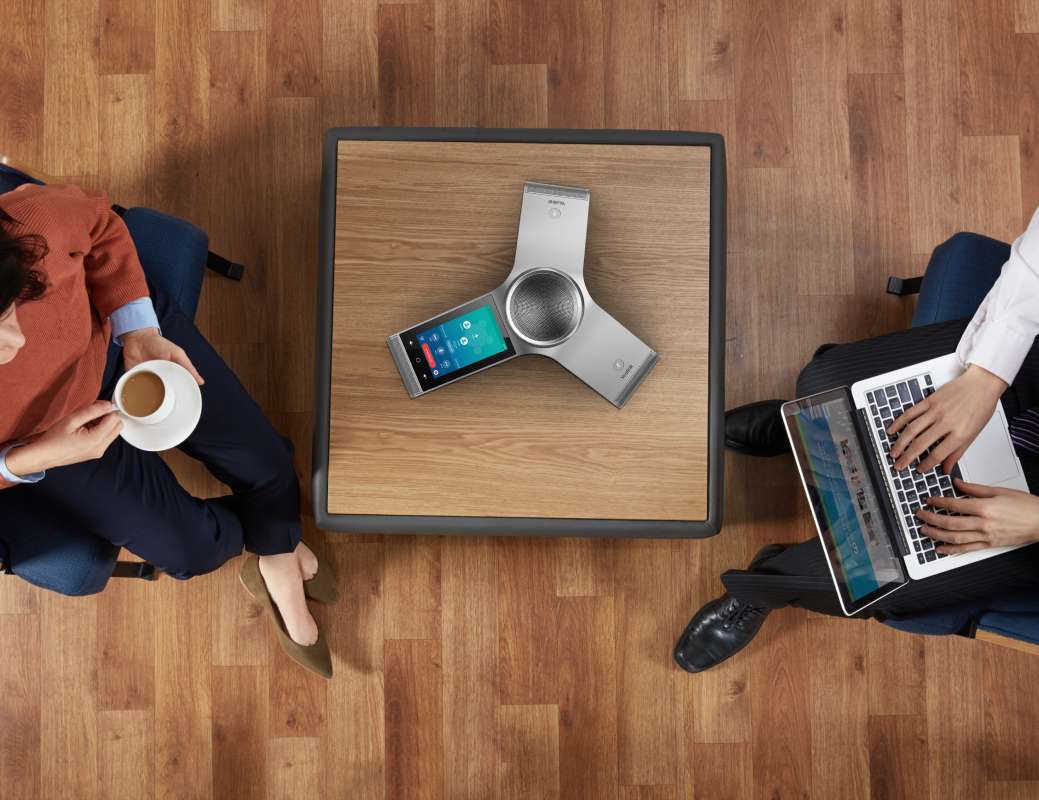In the rapidly evolving landscape of communication technology, businesses face a pivotal decision: should they stick with traditional phone systems or take the plunge into the world of Voice over Internet Protocol (VoIP) phone systems? This article delves deep into “The Cost of Communication: Assessing VoIP vs Traditional Phones for ROI,” helping you to navigate through the intricacies of both systems.
Understanding VoIP Phone Systems
What is a VoIP Phone System?
VoIP, or Voice over Internet Protocol, is a technology that allows voice communication and multimedia sessions over Internet Protocol (IP) networks. Unlike traditional telephony, which relies on circuit-switched networks, VoIP converts your voice into digital data packets. This means that you can make calls using an internet connection instead of traditional telephone lines.
How Do VoIP Phone Systems Work?
At its core, a VoIP phone system works by breaking down voice signals into data packets and transmitting them over the internet. This process involves several steps:
Signal Conversion: Your voice is converted from an analog signal to digital data. Packetization: The digital data is broken into small packets. Transmission: These packets are sent over the internet to their destination. Reassembly: Upon arrival, the packets are reassembled back into audio.This method not only allows for clear communication but also enables additional features like video conferencing and instant messaging.

Benefits of VoIP Phone Systems
Cost Efficiency: One of the most compelling reasons to consider a VoIP phone system is cost savings. Traditional phone lines often incur hefty long-distance charges, while VoIP typically offers free or low-cost calls.
Scalability: As businesses grow, so do their communication needs. VoIP systems can easily scale up or down based on demand without significant hardware changes.
Advanced Features: From call forwarding to voicemail-to-email capabilities, modern VoIP systems come packed with features that enhance productivity.
Limitations of VoIP Phone Systems
While there are numerous benefits to adopting a VoIP phone system, it’s essential to consider potential drawbacks:
Dependence on Internet Connection: A stable and robust internet connection is crucial for quality communication; poor connectivity can lead to dropped calls.
Emergency Calls: Some regions have restrictions on emergency services when using VoIP.
Traditional Phones Explained
What Are Traditional Phones?
Traditional phones operate on Public Switched Telephone Network (PSTN) technology and rely on copper wires and dedicated circuits for voice communications. They’ve been around for decades and are often associated with reliability due to their established infrastructure.
How Do Traditional Phones Work?
When you pick up a traditional phone:
An electrical signal travels through copper wires. The call connects through various switches in the PSTN until it reaches its destination. The recipient's phone rings, establishing a connection once answered.Pros of Traditional Phones
Reliability: Traditional phones work independently of internet connectivity and are less likely to fail during outages.
Simplicity: There’s no need for complex setups; usually just plug-and-play.
Cons of Traditional Phones
Higher Costs: Monthly bills can skyrocket due to long-distance charges and premium rates for additional features.
Limited Features: Compared to modern alternatives, traditional phones lack sophisticated functionalities like video calls or mobile integration.
Comparing Costs Between VoIP and Traditional Phones
Initial Setup Costs
| Feature | VoIP Phone Systems | Traditional Phones | |-----------------------|-------------------|--------------------| | Hardware Costs | Generally lower | Often higher | | Installation Fees | Minimal | Potentially high |
When considering initial setup costs, it's clear that VoIP phone systems tend to be more budget-friendly than their traditional counterparts.
Monthly Operating Costs
When we look at ongoing expenses:
- For VoIP, monthly fees are generally lower due to fewer hidden charges. Traditional telephony often has additional costs related to line rentals and maintenance.
Analyzing ROI (Return on Investment)
What Is ROI in Communication?
ROI in communication refers to the financial return obtained from investments made in communication technologies against their costs—essentially how much value your business gains from its expenditures in this area.
Calculating ROI for VoIP vs Traditional Phones
To calculate ROI effectively, consider:
Initial investment Monthly operating costs Downtime or lost productivity during transitions Long-term savingsFor example:
ROI = (Net Profit from Investment / Cost of Investment) x 100By analyzing these factors across both systems, businesses can make informed choices regarding which option delivers superior financial returns over time.
Key Features Comparison: VoIP vs Traditional Phones
Below is a comparison table highlighting key features commonly evaluated by businesses when choosing between VoIP https://kameronpbfl.bloggersdelight.dk/2024/12/22/choosing-between-residential-and-business-voip-solutions/ and traditional phone solutions:
| Feature | VoIP Phone System | Traditional Phone | |-------------------------|---------------------------|-------------------------| | Call Quality | High (dependent on bandwidth)| Good | | Flexibility | Highly adaptable | Limited | | Integration with other software | Yes | No | | Mobility | Remote access available | Limited | | Maintenance | Low maintenance | Higher maintenance |
As seen above, VoIP phone systems shine in flexibility, integration capabilities, and mobility compared to traditional phones.
Real-world Applications of VoIP Technology
Business Communications
Many enterprises leverage VoIP technology not just for cost savings but also for enhanced functionality such as conference calling and unified communications platforms that integrate various tools into one service.
Remote Working Solutions
With remote work becoming increasingly common, VoIP provides employees with seamless connectivity regardless of location—an invaluable asset for modern companies looking to maintain productivity outside conventional office environments.
Case Studies: Businesses Transitioning from Traditional Phones to VoIP
Several companies have reported remarkable transformations after switching from traditional phones to VoIP.
Company A experienced a 30% reduction in annual telecommunications costs after implementing a VoIP phone system. Company B improved employee collaboration significantly by integrating their existing apps with new VoIP solutions, resulting in happier employees and better customer satisfaction scores.The Future of Communication Technology
As we look ahead at emerging trends in communication technology, several noteworthy developments will likely shape both VoIP phone systems and traditional telephony:
Artificial Intelligence Integration
AI-powered tools will enhance interaction capabilities within both systems—think chatbots handling basic queries while freeing human agents for complex tasks.
Mobile Connectivity
As mobile devices continue dominating personal communications; integrating them smoothly with either form will remain essential.
FAQs About "The Cost of Communication: Assessing VoIP vs Traditional Phones for ROI"
What’s the primary difference between VoIP and traditional phones?
The main difference lies in how calls are transmitted; VoIP uses the internet, while traditional phones rely on physical telephone lines.
Are there any hidden fees associated with Voice over IP?
While generally low-cost, some providers may impose fees for specific services like international calling or advanced features—always check your service agreement!
Can I keep my existing number if I switch to a VoIP system?
Yes! Most providers allow number porting so you can retain your current number even after switching services.
How does call quality compare between both types?
Call quality hinges more on network stability; however, when optimized correctly, VoIPs often deliver superior clarity without static issues.
Do I need special equipment for using a Voip system?
While some setups require specific devices like IP phones or adapters; many users find standard computers or smartphones sufficient with appropriate software installed.
Is it possible to use Wi-Fi alone for making calls through Voice over IP?
Absolutely! In fact, Wi-Fi connectivity enhances call quality dramatically, making it an appealing option especially when traveling.
Conclusion
In evaluating “The Cost of Communication: Assessing VoIP vs Traditional Phones for ROI,” it’s evident that businesses must weigh many factors before deciding which system best suits their needs—be it cost savings offered by Voip Phone Systems, flexibility afforded through advanced features available only through modern alternatives versus reliability tied directly into legacy infrastructures still prevalent today. Ultimately though; investing wisely today could yield substantial returns tomorrow!

This comprehensive guide aims at equipping you with everything needed regarding "The Cost Of Communication", setting you up nicely whether you're leaning towards embracing innovative technologies like VOIPs or sticking firmly rooted within tried-and-true methodologies stemming back generations past!